The National Electrical Code, even though it is now almost 900 pages long, cannot specifically define every particular piece of equipment and every installation requirement for that equipment. There are always going to be areas that are left to the interpretation of the local inspector (the AHJ). This article will cover four gray areas that I get calls on and, perhaps, generate some discussion that may lead to clarifications. Send me your comments and your feelings about how the Code is either grayer or less gray and perhaps we will cover them in a future article.
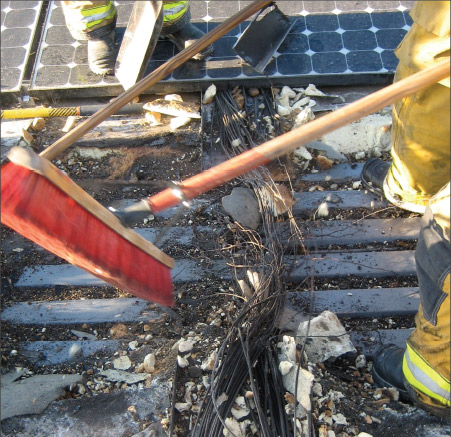
Photo 1. Couldn’t find the dc PV disconnect. What do you mean, the sun has to set?
Service Disconnect and PV Disconnect
This has long been one of my favorite gray areas in the Code. Section 230.70(A)(1) has the following requirement for the service disconnecting means.
“230.70(A)(1) Readily Accessible Location. The service disconnecting means shall be installed at a readily accessible location either outside of a building or structure or inside nearest the point of entrance of the service conductors.”
690.14(C)(1) has a similar requirement for the dc PV main disconnecting means.
“690.14(C)(1) Location. The photovoltaic disconnecting means shall be installed at a readily accessible location either on the outside of a building or structure or inside nearest the point of entrance of the system conductors.”
Now let’s go to the definitions in Article 100 and look up the definition of readily accessible.
“Accessible, Readily. Capable of being reached quickly for operation, renewal or inspection without requiring those to whom ready access is requisite to climb over or remove obstacles or to resort to portable ladders and so forth.”
AC Service Disconnect. Fire Service personnel responding to fire emergencies have a requirement to access the service disconnect to turn off the ac power to a building or structure to ensure safety where water and axes are being used.
One would assume that a locked door is an obstacle that must be removed to access a service disconnect located inside a building. I question whether or not the installation of the service disconnect inside a locked building meets the definition of readily accessible. With half of the residential service disconnects located inside the home and the other half located outside of the home, we seem to have a gray area.
An all too common situation occurs when a residence is on fire. The ac service disconnect is behind locked doors. The Fire Service maintains that they have master keys to many locks. And when confronted with high security locks, they bring out their universal master key, the fire axe. However, entering a burning building with power still in the building is not conducive to maximum safety.
Normally, the Fire Service will request the local utility to quickly respond and remove power from the building by opening a disconnect somewhere in the distribution system. However, when the power company cannot respond quickly enough in emergency situations, the Fire Service can and will remove the utility meter from the outside of the building thereby disconnecting the AC power to the structure. The Fire Service is usually reluctant to do this because of perceived hazards in this action and the fact that the meter socket and service conductors are still energized on or in the vicinity of the structure.
In many jurisdictions, the local codes and utility requirements dictate that all ac service disconnects on new construction be installed on the outside of the building near the meter location.
While there are ways to disconnect the ac power from a building or structure, it appears that this is a gray area in the Code. What about the dc PV disconnect?
DC PV Disconnect. The dc circuits from a PV array on the roof entering a building or structure do not have a meter that can be removed when the dc disconnect is located inside the structure. This gray area gets a little grayer when other sections in Article 690 are examined. The exception to 690.14(C)(1) of theCode makes things even a little more confusing. Where the dc PV conductors are installed in a metallic raceway, the dc PV disconnect does not have to be located near the point of entry and apparently can be located anywhere inside the building (except in a bathroom), but the disconnect must still be readily accessible. See photo 1.
DC Battery Disconnect. And there is an (increasing) number of battery-backed-up utility-interactive PV systems as well as many off-grid PV systems that have the ac circuits supplied by an inverter that is, in turn, supplied by a battery bank. What is the disconnect requirement for that battery disconnect and where is it to be located?
Help in 2014? For PV circuits, it would appear that the 2014 National Electrical Code might provide some clarification (or at least, other requirements) in this area. It is likely that a Fast Response disconnect will be required for these energized PV circuits on and in a building and the implication is that the Fire Service will have access to some sort of a remote controlled disconnecting means that will de-energize most of the PV circuits on or in a building or structure from an external location. However, for the time being it appears that these areas are still gray and have been for a very long time.
Placards and Directories. Although not directly addressing the accessibility issue, placards and directories help the first responders in locating all of the required disconnects. Sections 690.54, 690.55, 698.56, and 705.10 address these requirements. See photo 2.
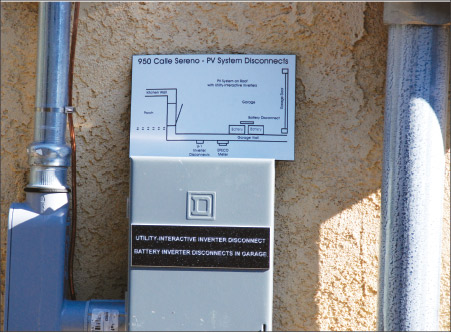
Photo 2. Placard showing external ac PV disconnect and dc battery disconnect in garage.
Grouping
Another gray area is the definition of grouping. In several sections of the Code, disconnecting means are required to be “grouped.” These requirements appear in 690.15; 690.14(C)(4); 230.71; 230.72 and other sections. Grouping is not specifically defined in the Code. Some inspectors maintain that the distance between the grouped disconnects is as far as you can reach with outstretched arms. Others consider grouping to mean within sight and, of course, within sight from is defined in Chapter 1 of the Code. A gray area: Should the dc PV disconnect be grouped with the ac service disconnect for the building? And, if so, how far apart can they be? See photo 3.
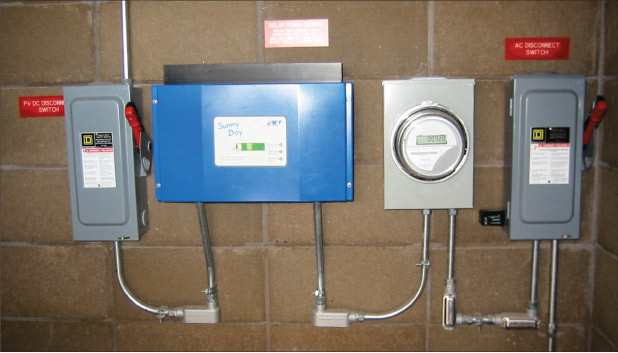
Photo 3. Nicely grouped ac and dc disconnects
The Fence. Here is an example that I hear about several times a year. The inverter does not have an internal ac disconnect or the local jurisdiction or utility requires an external disconnect. NEC Section 690.15 requires a maintenance disconnect grouped with the inverter for obvious reasons. In many cases, where the inverter is located adjacent to the load center for the building, the backfed breaker in the load center can be used as the required disconnect. They are within arms length and it is easy to verify that the breaker is off when the inverter needs maintenance. Unfortunately, for some reason, frequently the inverter is mounted on a wall with a fence separating the inverter location from the wall-mounted ac load center containing the backfed breaker. Usually, the fence has a gate in it and when the gate is open the breaker is visible from the inverter vocation. But, when the gate is closed, the breaker cannot be seen from the inverter.
In some cases the gate is always closed to keep a dog in the backyard. In another example, the gate would normally swing shut by itself. And in some cases, the gate could be latched in the open position. This is a gray area requiring an AHJ decision. See photo 4.
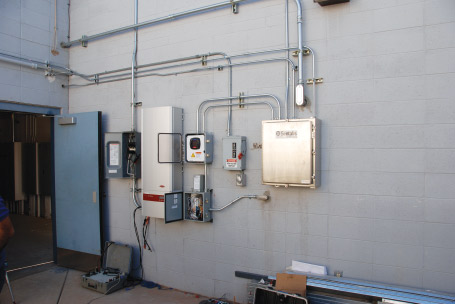
Photo 4. Oops, ac disconnect on other side of the wall
Expected Lowest Temperature
The Problem. PV designers and installers face a dilemma when designing PV systems. PV module voltages and string (the series connection of modules) voltages increase as temperatures go down, and they decrease as temperatures go up. The PV inverter is able to accept only a certain range of voltages. In hot weather the string voltage must be high enough to operate the inverter properly and, of course, associated with the lower module voltage is less module/string/array power. The designer wants to put as many modules in series for each string as possible to maximize power output and to keep the inverter operating properly in hot weather. However, in cold weather voltages increase and if they increase too much they may exceed the upper limit of the inverter and the upper voltage limit of the modules, the wiring, and other equipment.
The Gray Area. NEC Section 690.7, Maximum Voltage, requires that the maximum photovoltaic system voltage be determined and the requirement is to determine that voltage at the lowest expected ambient temperature. The gray area of interest: What is meant by the term lowest expected ambient temperature?
It is possible that the temperature may drop to a point where the voltage of the modules and the string of modules rise above the voltage rating of the modules, the voltage rating of the cables, or the voltage rating of other connected equipment? The open-circuit voltage (Voc) of the string is the voltage of concern. That voltage may be higher than the normal rated maximum power point voltage of the module or the string (Vmp), and may exceed the maximum voltage rating of equipment in the system.
Operating Modes. In a properly functioning PV system, the dc electrical system is rarely subjected to open-circuit voltage (Voc). As the array voltage comes up in the morning when the sun rises, the inverter will sense the increasing voltage and when the voltage is high enough to energize the control circuits, the inverter will start power tracking and will hold the array dc voltage at the peak power point (Vmp), which will be substantially below the open-circuit voltage. In most cases in the morning the current will be very low and no significant amounts of energy will be generated.
The only time that the inverter and the wiring on the dc side will see open-circuit voltage is when the dc disconnect is opened and then closed or the inverter is turned off or the inverter loses ac power.
All listed equipment is tested at twice the rated voltage +1000 V as a high potential test. For a 600 V module and 600 V wiring the test is 2200 V. Modules and wiring will normally not be damaged if operated slightly above the maximum rated voltage, although this would be a code violation [110.3(B)].
However, inverters are not as robust, and I personally have damaged a 600 V rated inverter at 604 V. This is the area of concern: Will cold weather subject the dc input of the inverter to a voltage above its rated value (frequently 600 V)? Be advised, some inverters have a maximum voltage of only 500 V or 550 V. It always pays to read the manual.
Multiple Events. In the real world, the following conditions have to occur simultaneously in order for the inverter to see voltages above maximum rated voltage. The temperature has to be at or below the expected low temperature being used in the calculation of Voc; there has to be sufficient light on the PV array (and that does not require direct illumination by the sun); and the dc disconnect must be opened and closed, or the inverter turned off, or the ac power disconnected or not present.
The lowest temperatures occur in the early morning hours and since the PV array has cold soaked all night long, it will be at that temperature for some period of time after the minimum temperature occurs. Also, on clear nights you have night-sky radiation that will lower the temperature of the PV array a few degrees Celsius (2 or 3 degrees) below the measured low ambient temperature.
In these early morning hours, there will usually be very little if any module heating because the sun is not directly shining on the PV array. Indirect sky illumination and cloud-scattered illumination may be sufficient to bring the module voltage up to full rated Voc for that temperature.
Also, there can be very cold, windy days in bright sunshine where the wind removes all heat from the PV modules and if the circuit is interrupted and then restored, the inverter can be subjected to a high Voc.
So, there is a probability function involved with these occurrences that will be very difficult to estimate. Also the record low may not be ever seen again in the area or, on the other hand, future variations in temperature may exceed that number.
But the Unexpected Happens. In warm, sunny Las Cruces, NM, where I live, most PV systems are designed for an expected low of 14–15°F. However, in February 2011, the temperature went down to -2°F for several days with rolling power blackouts that kept turning the numerous installed PV inverters OFF and ON. Fortunately, the blackouts did not occur until late afternoon and the PV arrays had been heated by the sun to temperatures in the 40–60°F ranges, resulting in open circuit voltages significantly below the rated voltages of the equipment. See photo 5.
Pick a Source. In choosing an expected lowest temperature, several methods are available—none explicitly required by the NEC. Another gray area for the AHJ.
A conservative estimate would be to use the local weather data to get the record low. This information is available from various sources on the web as well as www.weather.com. The ASHRAE Handbook—Fundamentals has data low temperatures that gives the frequency of the temperature variations that occur in a given area (Informational Note: 690.7). Also, the local weather station can provide the last 10 years of weather data and this data can be used to determine the average low and the trend on those low temperatures.
AHJ Decision? Some AHJs and jurisdictions require that the record low be used. Maybe they are not sure that Global Warming exists. Other AHJs allow the systems installer/designer to pick the expected low temperature and justify it.

Photo 5. Unexpected very cold weather
DC-to-DC Converters
Several dc-to-dc converters are already on the market and more will be coming in future months. Most of these are separate boxes that are attached to the module leads and the output conductors are connected in series to make a string of modules. However, at least one, and possibly more, of these dc-to-dc converters will be installed directly in or replace the module junction box on the back of the PV module. See photo 6.
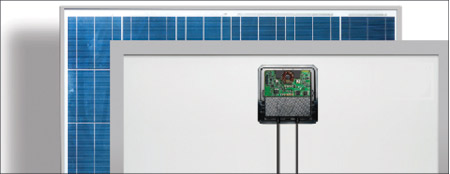
Photo 6. Smart Module by Tigo Energy.
In most cases, these dc-to-dc converters decouple the output of the module from the circuit going to the inverter. And each of these dc-to-dc converters has different characteristics with respect to the ratings of input and output circuits and the amount of isolation or decoupling from the module output. The NEC,even in 2014, will have few details on how these dc-to-dc converters must be installed.
It will not be possible to use sections 690.7, 690.8 and 690.9 which are based on module output characteristics to determine how these devices are to be treated in a PV system. At this point it appears that the only way the inspector has to deal with them is to use NEC Section 110.3(B). Each of these certified/listed products must be installed in a manner consistent with the instructions provided with the products. And unfortunately, there are going to be gray areas in those instructions and in the lack of specific requirements in the Code—or possibly due to existing requirements in the Code.
As an example: a dc-to-dc converter may have a maximum output of 60 V, and up to 15 of these converters may be connected in series to make a string. However, the interaction between the converter and the required matching inverter in the system restricts the maximum string voltage to 500 V by restricting the output of each converter to 40 volts. But here is the gray area: 15 x 60 = 900 V. Applying normal code procedures and requirements would tend to require that 900 V or 1000 V conductors and equipment would be needed. However, the instruction manual accompanying this listed device says that the “smart” inverter has been evaluated as a system with the dc-to-dc converter to fully maintain the correct voltage on the system in a safe manner and that the system has fail safe features that will ensure that the string voltage is never higher than the equipment limit.
Now and more so in the future, inspectors will have to read and become totally familiar with the installation manuals of current and new equipment. Only in this way, can the inspection community ensure the safety of the public.
Summary. Gray areas: Keeping life interesting for the inspector.
For More Information
The author has retired from the Southwest Technology Development Institute at New Mexico State University, but is devoting about 25% of his time to PV activities in order to keep involved in writing these Perspectives on PV articles in IAEI News and to stay active in the NEC and UL Standards development. He can be reached, sometimes, at: e-mail: jwiles@nmsu.edu, Phone: 575-646-6105
The Southwest Technology Development Institute web site maintains a PV Systems Inspector/Installer Checklist and all copies of the previous “Perspectives on PV” articles for easy downloading. A color copy of the latest version (1.93) of the 150-page, Photovoltaic Power Systems and the 2005 National Electrical Code: Suggested Practices, written by the author, may be downloaded from this web site:http://www.nmsu.edu/~tdi/Photovoltaics/Codes-Stds/Codes-Stds.html It should be updated to the 2008 and 2011 NEC before the 2014 NEC arrives.










Find Us on Socials